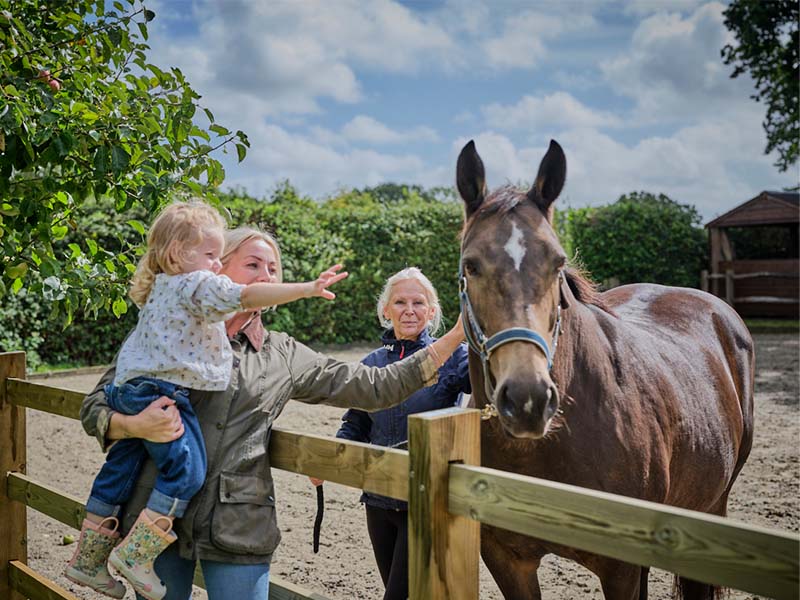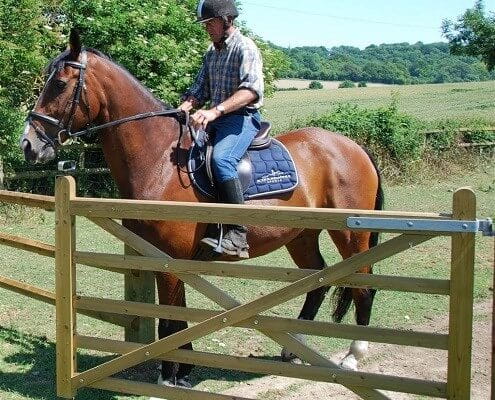14/11/2025 12:00 AM
As winter approaches, bringing heavy rain, strong winds, and shorter days, now is the ideal time to assess your fencing. Regular inspections and investing in quality materials can help prevent accidents and keep your horses safe throughout the colder months.

The Right Height for Safety
Every paddock is different, and so are the horses within it. While sizes and temperaments vary, as a general rule, fencing should be at least 1.2 metres high for ponies and 1.5 metres for horses. This height discourages leaning or jumping and helps maintain safe boundaries. For particularly lively horses or where paddocks adjoin others, increasing the height slightly can provide extra peace of mind.

Strength Starts Below the Surface
A fence’s safety depends on its structure. If a horse runs into a fence, whether startled or playing, the difference between a close call and a serious injury often comes down to the strength and stability of the fencing.
Post and rail fencing remains one of the safest and most reliable options. It offers excellent visibility and strength while being forgiving on impact. Unlike barbed wire, which can cause serious cuts and is difficult for horses to see, post and rail fencing creates a clear, visible boundary without sharp or dangerous edges.
Constructed with strong timber uprights and two, three, or four horizontal rails, post and rail fencing can be tailored to suit the layout and terrain of your paddock. Thicker rails provide greater strength and resilience, helping your fence withstand pressure from horses rubbing or leaning against it.

Installation Done Right
Proper installation is just as important as material quality. Posts should be embedded at least 600mm below ground level, or deeper for taller fencing. In areas exposed to high winds or saturated soil, we recommend setting posts up to 900mm deep to improve stability and resistance to movement. This extra depth also helps prevent posts from loosening when horses scratch against them.
Before winter takes hold, inspect your fences for unstable posts, damaged rails, or signs of decay. Addressing these issues early helps prevent more serious problems later.
Why Timber Quality Makes a Difference
Investing in premium fencing materials provides genuine long-term value. Look for kiln-dried, pressure treated timber that offers protection against rot and insect attack.
At Jacksons Fencing, all our timber fencing and gates are vacuum pressure treated with our unique Jakcure® timber treatment and guaranteed for 25 years. This process eliminates the need for retreatment and ensures long-lasting performance with minimal maintenance.
Lower grade materials may appear cost-effective initially, but they often require replacement after only seven to ten years. A single, high quality installation can last two or three times longer, saving both time and disruption to your horses.
Professional Installation for Peace of Mind
The difference between a safe paddock and a risky one often comes down to the precision of installation. Posts spaced too far apart can lead to rail movement and instability. Professional installers ensure consistent spacing and adjust for soil and terrain conditions, helping to maintain the integrity of your fence.
Our Approved Installer network comprises experienced professionals who are fully versed in the correct installation of our products, ensuring the best performance and longevity.
Gates: An Essential Safety Feature
Gates deserve the same attention as the rest of your fencing. Timber gates are generally safer than metal alternatives as they have a slight degree of flex, reducing the risk of injury if a horse pushes or kicks against them.
Choose gates that are at least 3.6 metres wide to allow vehicles and horses to pass through comfortably. Strong top and bottom rails add rigidity and help the gate withstand impact.
High quality hinges and fittings are also vital. Galvanised hardware provides strength, corrosion resistance, and dependable operation year after year. Gates should always swing into the paddock or field to prevent horses from pushing them open toward roads or other hazards.
For added safety, ensure all fittings have smooth, rounded edges, and use reliable locks or catches. Galvanised or stainless steel fittings such as spring catches or auto-latches are ideal for regular use and help improve both security and convenience. During winter, when theft can increase, regularly check that all locks and latches are secure and functioning properly.

Preparing for Winter
British winters can be particularly harsh on fencing. Heavy rainfall, frost, and high winds can all take their toll. Before bad weather sets in, check for overhanging branches or debris that could damage your fences during storms, and ensure posts remain firmly in place. Tighten any fittings and replace damaged components promptly.
Making Fence Safety Routine
Paddock safety isn’t a one-time task; it requires regular attention. Inspect your fencing at least twice a year, ideally in spring and autumn, and fix any issues as soon as they arise.
If your paddock borders a public footpath, direct walkers through a kissing gate or a marked right-of-way to minimise disturbance. Where horses graze near roads, consider adding secondary fencing for additional protection.
Investing in quality materials, proper installation, and regular maintenance ensures both safety and peace of mind. With the right fencing, you can protect your horses and your investment for many years to come.